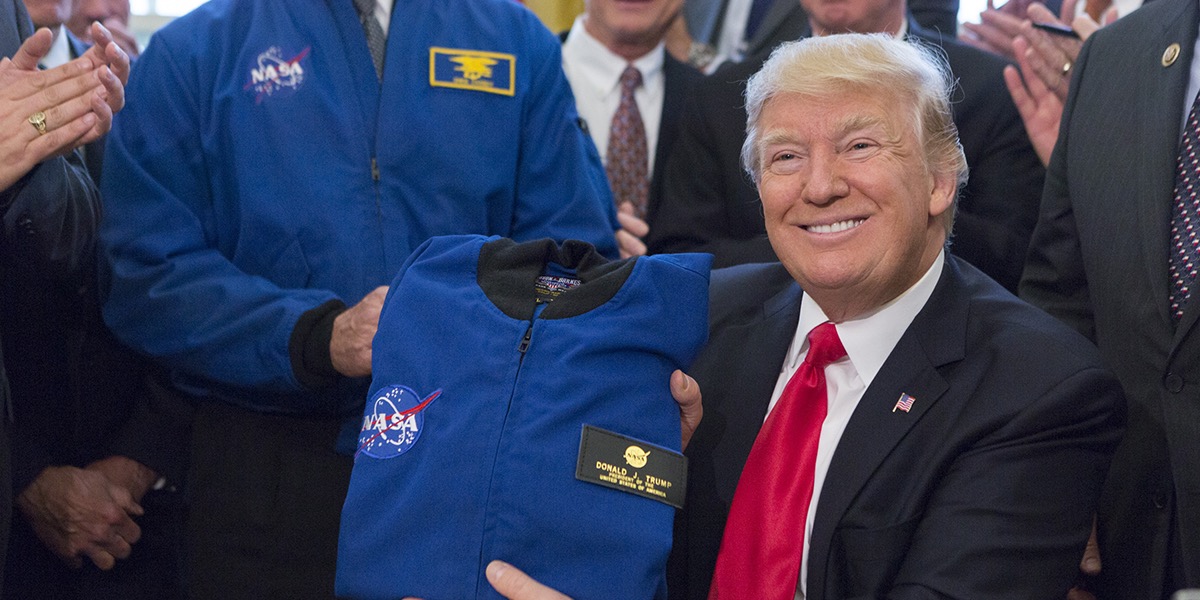
Friday, President Trump released his “skinny” budget request for the U.S. Government’s Fiscal Year 2026; included for NASA is $18.8 billion in proposed funding. This is down 25% from what the agency received in FY2025. Here’s what programs are safe and in trouble.
Called a “skinny” budget, the released proposal doesn’t go into detail as to which programs will receive what funding but shares the big picture of how much each agency will receive and a breakdown of increases and decreases. We’ll have to wait until later this month for detailed budget proposals.
Exploration gets increased funding for Moon and Mars
In what was the only section to gain an increase in funding, NASA’s exploration programs will receive about $647 million in extra funding. This includes both NASA’s Artemis Program and the development of sending humans to Mars.
The White House is proposing giving NASA $7 billion for lunar exploration and a new $1 billion for Mars exploration. Adding in dedicated funding for Mars isn’t unexpected, as President Trump has stated several times publicly his interest in going to Mars over the Moon.
However, funding for landing on the Moon is a must given Congress’s approval of the Artemis Program and geopolitical tensions with China.
This funding also supports nominated NASA Administrator Jared Isaacman’s goal to support both the Moon and Mars programs side by side.
Move to commercial launchers
The budget states that NASA should move away from SLS and Orion for lunar missions past Artemis II in favor of commercial heavy lift rockets. This would likely cancel the in-progress Mobile Launcher 2 tower at Kennedy Space Center and the SLS Exploration Upper Stage upgrade.
Space Science seems biggest hit
As expected from previous reporting, NASA’s science programs will see the largest and potentially detrimental funding cuts. The White House’s proposal states a $2.2 billion funding cut and the cancellation of “unaffordable” missions like Mars Sample Return.
The budget states this is due to a refocus of NASA to prioritize exploration; however, activists state this could stall NASA’s leadership in space, ending research careers before they can start and wasting millions or billions in already spent taxpayers’ dollars.
Earth Science and Mission Support both see billion dollar cuts
With the same reason to refocus on lunar and Martian exploration, NASA’s Mission Support Directorate, the division that keeps all its centers operating, including maintenance, IT, and other center operations, will see a $1.1 billion cut to “streamline” operations.
Also seeing a $1.1 billion cut is Earth Science, with “low-level climate monitoring” funding eliminated and the hope to restructure NASA’s Landsat program to be more cost-efficient.
Reduced ISS capacity and research
The ISS could see a $503 million cut to save money as the agency moves to commercial options. This would be done by reducing the crew size and research output of the station; however, no details were shared.
An important note is that a crew size of less than six is suboptimal, as the amount of maintenance work would overwhelm the crew, leading to no research. The current crew of seven allows for at least one crew member to be dedicated to research, increasing the station’s value and the value to taxpayers.
Once again STEM is on the chopping block
Just like in President Trump’s first term, the White House wishes to shut down NASA’s STEM Outreach division. “NASA will inspire the next generation of explorers through exciting, ambitious space missions, not through subsidizing woke STEM programming and research that prioritizes some groups of students over others and has had minimal impact on the aerospace workforce.”
However, last time this division attempted to be canceled, Congress funded it fully. A lot has changed since then, and while STEM Outreach was supported by both parties, we’ll have to see what Congress decides this time.
Like the rest of these funding cuts, they are only wants and not law. Congress controls the budget, and many Congressmen, both Republican and Democrat, have expressed displeasure with NASA’s cuts. It will likely take months to finalize the federal budget for 2026, and only then will we know the fate of many of NASA’s programs.
FTC: We use income earning auto affiliate links. More.




Comments